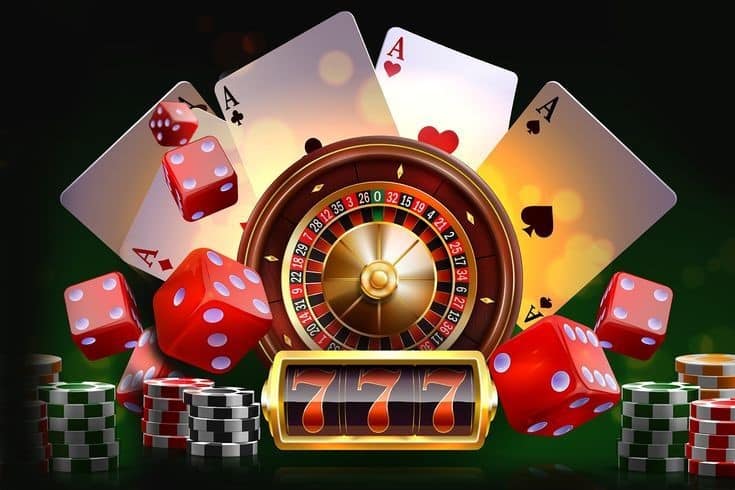
In the world of gambling games, very few abilities are as crucial and mysterious as the skill of bluffing. Honing the ability to persuasively depict a false narrative can be the key between a small win and a transformational jackpot. Bluffing is not just about trickery; it involves a profound understanding of people’s minds, strategy, and the dynamics of the tables. Whether you’re playing Texas Hold’ em, Omaha, or any number of other well-known versions, the subtleties of bluffing can elevate your game and keep your opponents guessing.
As players convene around the table, the stakes rise, and the pressure thickens. It is within this charged atmosphere that the genuine mastery of bluffing becomes apparent. Knowing when to bait a trap, when to fold, and when to execute a calculated bluff requires an acute awareness of not only your own hand but also the actions and habits of your opponents. In this exploration of the art of bluffing, we will explore techniques, psychological tactics, and the subtle interplay of risk and reward that define this captivating aspect of casino games.
Grasping Feigning Techniques
Bluffing is a fundamental part of the game of poker that can shift the balance of a match in an instant. okwintv It entails deceiving your rivals that you hold a more powerful hand than you really do. The key to successful bluffing is in the subtlety of your tactics. A well-executed bluff necessitates a deep grasp of your opponents’ habits and the interactions of the table. Knowing when to deceive demands assessing the power of your hand and assessing if the risk is balanced by the possible benefit.
There are multiple strategies employed by poker enthusiasts to refine their deceptive tactics. One common tactic is the partial bluff, where a player wagers with a hand that is not at the moment the best but has the potential to strengthen. This strategy allows players to build a pool while still maintaining the chance of a better hand in future hands. Additionally, the old saying "timing matters" is accurate in the game. Bluffing at the right times, such as when the board presents an unfavorable scenario for your opponents, can make your trickery considerably convincing.
Analyzing your opponents is an crucial skill for any effective deceiver. Look for indicators that suggest whether a gambler is self-assured or unsure. Minor changes in gestures, betting habits, and response times can provide crucial clues. Additionally, grasping the mental aspects of the game allows players to adapt their approaches. A powerful bluff not only is based on the hand in your grip but also on the overall narrative you develop throughout the session, encouraging your rivals to question their own choices and decisions.
Psychology Behind Deception
Bluffing in the game of poker is fundamentally rooted in the mental dynamics of both the the bluffer and the opponent. At the core, bluffing exploits the uncertainty and fear of loss that players experience. Successful bluffers recognize that their opponents are not just responding to the hand, but also to the perceived confidence and behavior of their rival. By projecting strength through wager amounts and physical cues, a player can influence their opponents into folding superior hands, capitalizing on the psychological pressure created in the moment.
Emotional control is a crucial aspect of successful bluffing. Players must manage their own feelings while also reading the reactions of their opponents. A good bluffer remains calm and collected, keeping away from any signs of anxiety or hesitation. This emotional stability helps to strengthen the narrative of strength they are trying to convey. Conversely, opponents who detect fear or uncertainty are more likely to challenge a bluff. Therefore, the ability to maintain composure under stress is a crucial psychological skill for every successful poker player.
Understanding the mental state of the opponent is equally important in the art of bluffing. Every player brings their own set of beliefs, preferences, and backgrounds to the table, which can influence their decisions. A keen observer will evaluate their opponents’ styles of play and habits, making informed assumptions about how they might react to a bluff. By adjusting their approach based on these observations, bluffers can enhance their success and increase the likelihood of realizing their intended outcome, highlighting the notion that successful poker is as much about psychology as it is about the gameplay.
Case Studies of Successful Bluffs
A notable of the very famous bluffing moments in poker history occurred during the 1999 World Series of Poker final table featuring the legendary Phil Ivey. Confronting a formidable opponent, Ivey was holding an unimpressive hand while his rival appeared to have a powerful set. With carefully considered confidence, Ivey threw all his chips into the pot, a move that sent shockwaves through the table. His opponent, intimidated by the weight of Ivey’s reputation and the sheer force of the bet, ultimately folded, allowing Ivey to win the pot without having to show his cards. This moment demonstrates how a perfectly timed bluff can leverage psychological pressure to secure victory.
A further example occurred at the 2003 World Series of Poker, where amateur player Chris Moneymaker induced a fold from professional player Sam Farha. Moneymaker held a weak hand yet skillfully portrayed strength, culminating in a large bet on the river that had Farha doubting his own holding. The tension at the table escalated as Moneymaker kept a calm demeanor, leading Farha to critically evaluate the situation before deciding to fold a superior hand. This pivotal bluff not just marked Moneymaker’s rise to fame but also illustrated how even outsmart seasoned professionals with the right mix of courage and timing.
Finally, one of the best effective bluffs in tournament history can be credited to Gus Hansen during the 2007 Aussie Millions Poker Championship. Hansen played with aggression, often using his image as a wild player to instill doubt in his opponents’ minds. During a key hand, he found himself with a low pair against an opponent who had displayed previous strength. By placing a massive bet that signaled a strong hand, Hansen forced his opponent into a tough decision. After a lengthy deliberation, his rival folded, and Hansen revealed his weaker cards, demonstrating how a mixture of reputation and strategic bluffing can turn the tide in critical situations.
